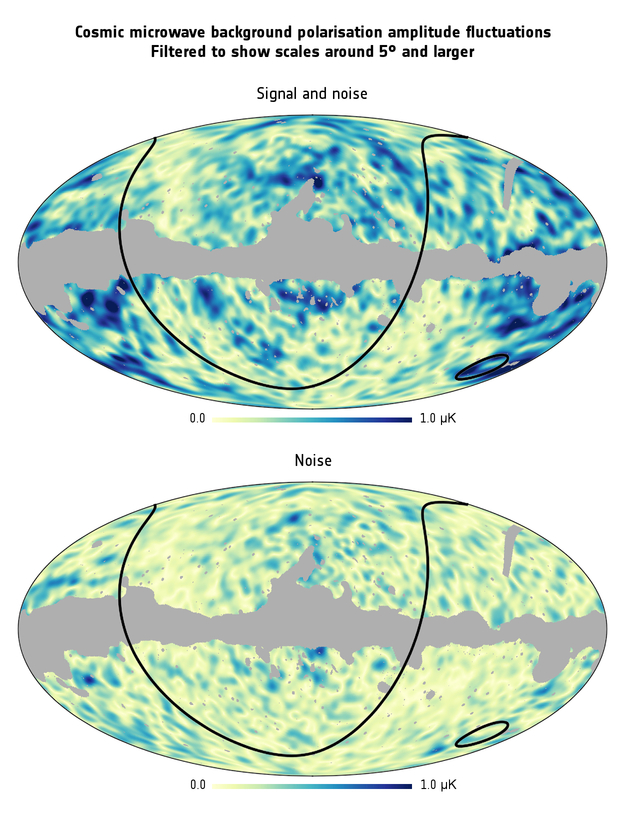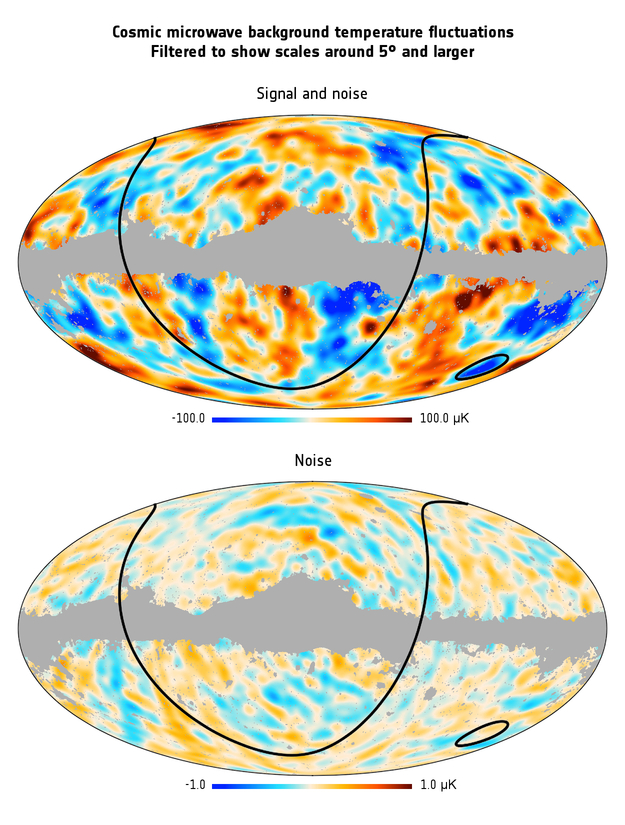Back in 2013, the European Space Agency released its first analysis of the data gathered by the Planck observatory. Between 2009 and 2013, this spacecraft observed the remnants of the radiation that filled the Universe immediately after the Big Bang – the Cosmic Microwave Background (CMB) – with the highest sensitivity of any mission to date and in multiple wavelengths.
In addition to largely confirming current theories on how the Universe evolved, Planck’s first map also revealed a number of temperature anomalies – like the CMB “Cold Spot” – that are difficult to explain. Unfortunately, with the latest analysis of the mission data, the Planck Collaboration team has found no new evidence for these anomalies, which means that astrophysicists are still short of an explanation.
This analysis, titled “Planck 2018 results. VII. Isotropy and statistics of the CMB“, was recently published in the journal Astronomy and Astrophysics. To recap, the CMB is the oldest light in the known Universe, which was created about 380,000 years after the Big Bang. The Planck mission’s initial analysis, released in 2013, focused mainly on the temperature of this background radiation, particularly the faint anomalies in the temperature data.
These anomalies appeared at large angular scales and indicated that the signal coming from certain regions of the CMB were about ten percent weaker than what the standard model of cosmology predicts. This was particularly the case in the two opposite hemispheres of the sky and around the “Cold Spot” – a large region with an unusually steep temperature profile.
These anomalies caused quite a stir in the astronomical community since they could not be explained using standard cosmological models. After ruling out the possibility that they were artifacts in the data produced by the satellite’s behavior or data processing, astronomers were still faced with the possibility that they were statistical flukes (very rare but possible fluctuations involving the standard model).
The presence of these anomalies also inspired all kinds of wild theories, ranging from the existence of new physics or a supervoid to an intrusion by another Universe. To further probe this mystery, the Planck Collaboration team decided to conduct a detailed analysis of the multi-frequency data gathered by the observatory to measure the polarization of the CMB.
Polarization measurements are considered the next frontier in CMB research, which addresses how the oldest light in the Universe was scattered by bouncing off electron particles before gathering together to form hydrogen atoms. A key motivation for this work is the theory of inflation, which posits that the size of the Universe expanded immensely immediately after the Big Bang.

This theory is another way astrophysicists seek to resolve the existence of the CMB temperature anomalies. By scrutinizing the Planck data, the team eliminated foreground sources of microwave emissions (such as gas and dust in our own Milky Way galaxy). In so doing, they were able to provide the best measurements to date of CMB polarization.
Since polarization provides an almost independent view of the CMB, the appearance of the anomalies there would increase astronomers’ confidence that they were being caused by something rather than simply being statistical flukes. However, the team saw no obvious sign of the anomalies beyond weak hints in the polarization data.
As Enrique Martínez González, a researcher from Instituto de Física de Cantabria and a co-author of the paper, explained in an ESA press release:
“We have some hints that, in the polarisation maps, there could be a power asymmetry similar to the one that is observed in the temperature maps, although it remains statistically unconvincing.”
While this would indicate that the anomalies are more likely to be statistical flukes, it does not rule out the possibility of new physics. Unfortunately, there remains no explanation for what could be affecting the temperature of the CMB, but not its polarization. In this respect, the new analysis has provided new and important constraints on what these physics could be.

“We said at the time of the first release that Planck would be testing the anomalies using its polarization data. The first set of polarization maps which are clean enough for this purpose were released in 2018, now we have the results.”
While there will be further analysis of the Planck results in the near future, it is not believed that they will yield any significant new results. At present, the Planck surveys
So, the great mystery of the CMB anisotropies remains for the time being. And with the latest analysis unable to rule out new physics or other speculations, scientists and enthusiasts are free to keep venturing that these could be giant “cosmic bruises” caused by our Universe and others running into each other like a bunch of billiard balls.
Further Reading: ESA, Astronomy and Astrophysics

